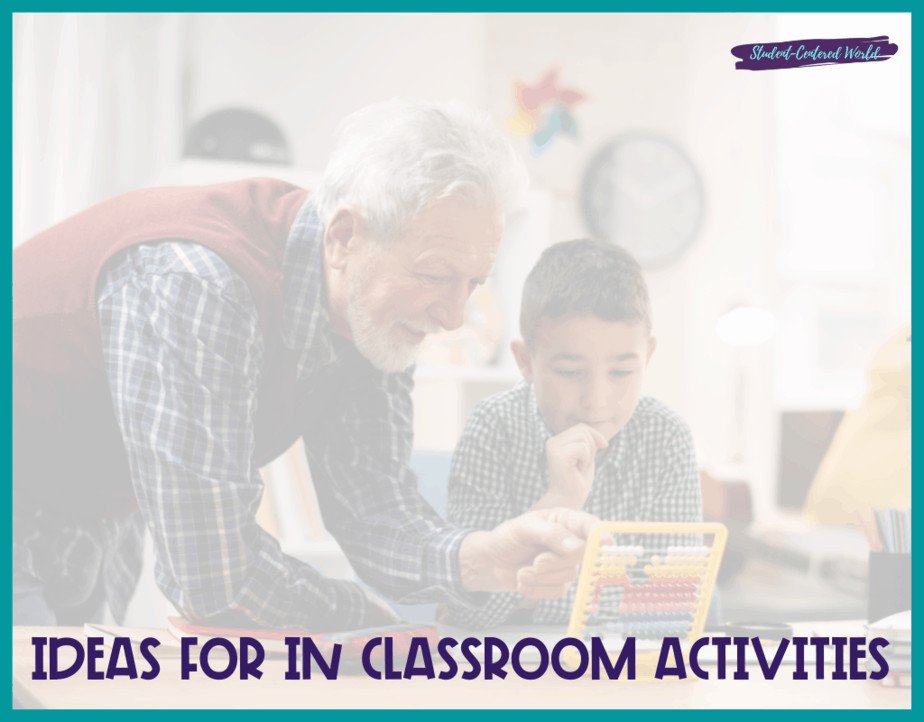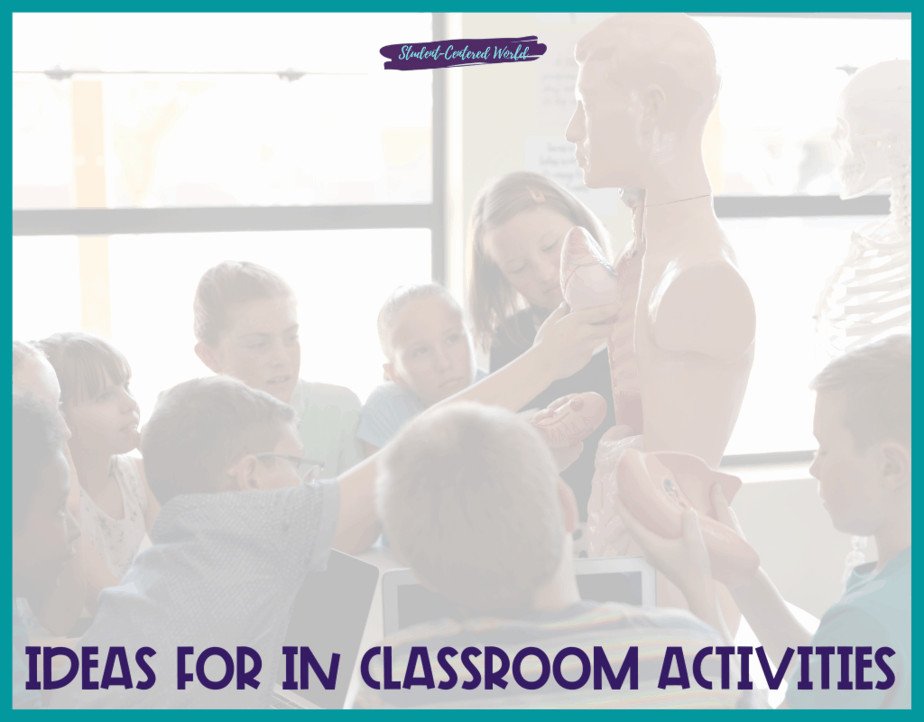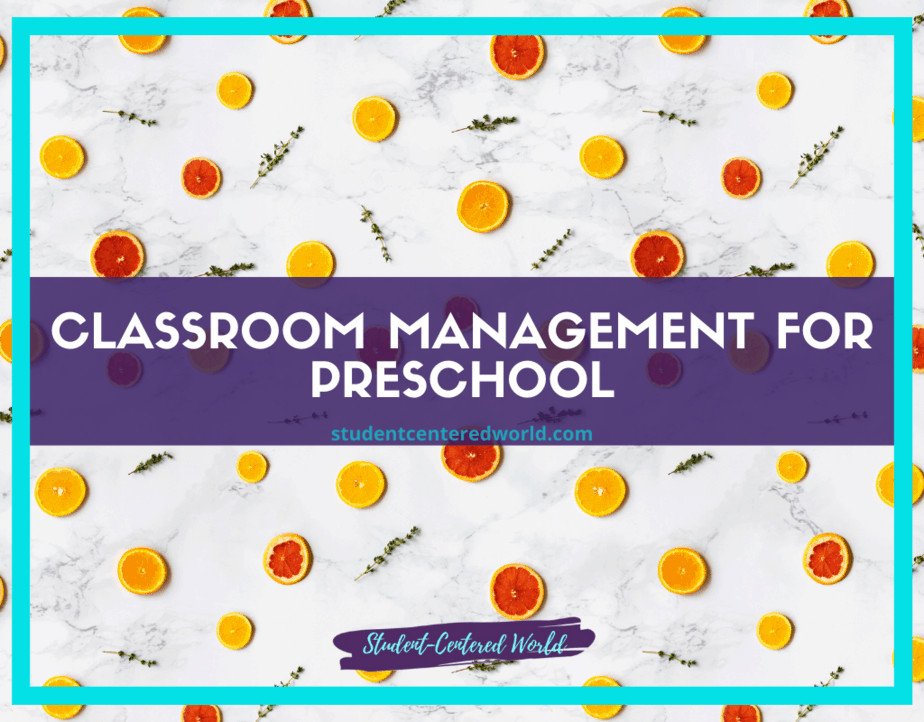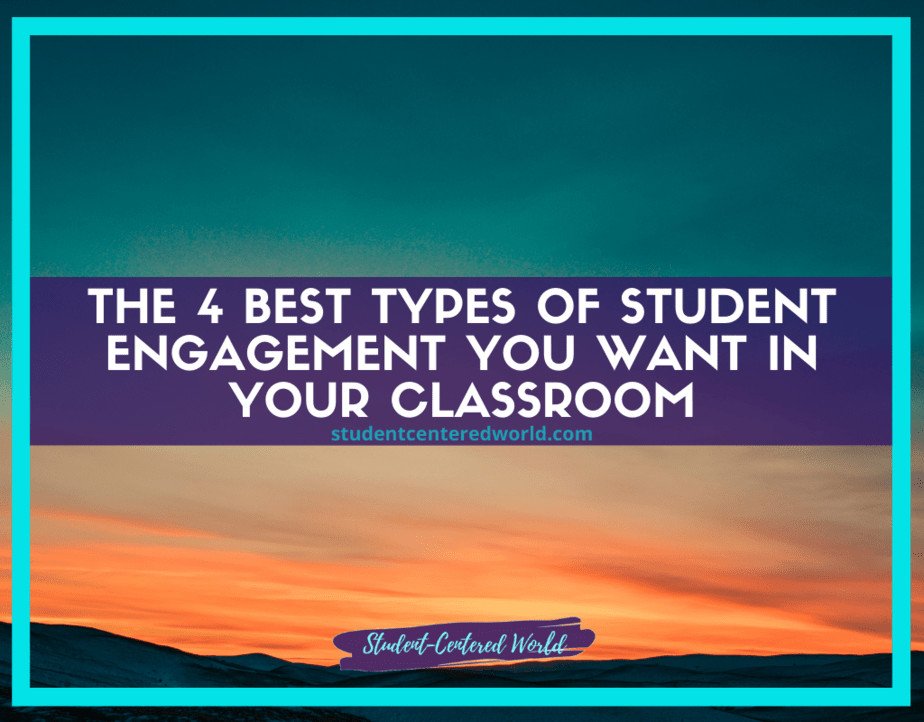21st Century In Classroom Activities to Engage Your Students with Ease
We all have our favorite ways to engage students in the classroom, but there is always room to find more in classroom activities that will get your students excited about learning. Whether you are a new or experienced teacher, there is no replacement for finding activities that your students will be excited to participate in.
The key is to not reinvent the wheel. You can still use the same content material, just repackage it in a different way that will get the students engaged and excited. In classroom activities don’t need to be extravagant: they just need to get the job done.
In classroom activities for students can include anything from getting them to participate in a survey about a certain topic you teach, or breaking into groups and doing fun activities for an upcoming unit on personal safety. Engaging your students is the key to making sure that they will learn as well as have fun while learning.
Besides being enjoyable, in classroom activities are also one of the strongest tools a teacher can have in their toolbox. A well-planned out and consistently implemented in classroom activity will help you keep your students engaged throughout the lesson. You never know how long they are going to last, so you may as well be prepared for any scenario that arises.

Ideas for engaging activities
1) Survey the class, then create an activity based on what you learn.
2) Have students write down two to three words that represent a particular topic or subject matter in your course. Then have them turn and read their words with someone else in the classroom who also wrote similar words. Discuss as a class how each word represents the topic.
3) Split students into groups and have them create a short skit based on what you are teaching or about a particular historical figure that is relevant to the class you are teaching.
4) Divide your students up into teams, let’s say there are four teams in each group. They will then be asked to answer questions on a particular topic you teach in your course. The team that answers the most number of questions correctly will be awarded a prize.
Strategies for hooking into student interest and exploring new material from multiple angles
1) Discussion is king – Engage your students with short question-answer sessions. The best way to get them thinking is by asking for their opinion. What do they think happened? Why did it happen that way? What if this was different? Make sure you illustrate that your acceptance and engagement of their ideas doesn’t mean your own interpretation of the story is less valuable, just different. This way you not only get students talking, but you also set an example of how to respectfully discuss other ideas.
2) Draw it out – Drawings are a powerful tool for visual learners. The idea is that if they can see the information better and organize it in a way that makes sense to them, then they’ll remember it more easily. When you have a chance to go over the lesson again, ask students to sketch out and label parts of the process or diagram key concepts. Then give them time during class to finish their drawings at home (or when doing homework).
3) Role-play it – Certain parts of the story can be learned better by doing than talking. This is especially true when it comes to complex ideas, like how a disease spreads through a community or how different theories relate to each other (for example-theories about plate tectonics). If you think your students would benefit from getting up and physically acting out their knowledge in class (or during homework) go ahead and let them.
4) Make it visual – Remember when I said that drawing was a powerful tool for visual learners? Images can be used the same way. Illustrations, diagrams, charts, graphs or other pictures can help students remember complex subjects more easily by giving them something to look at without forcing them to read words. For science, math and social studies-anything that can be illustrated with a drawing is a win for visual learners.
5) Run a debate – In some cases, it’s not enough to just tell students what happened or explain how things work. Students need to actually figure these ideas out on their own through experience and inquiry. The best way I’ve found for getting students to really understand something is by having them argue with people who think differently from them. This could be all of the students in your class or just a few. Either way, it can be an enjoyable and engaging strategy for exploring new material.
Some other ways you could run a debate in class are:
- Students play the role of scientists and argue about theories, laws, or philosophical ideas. This way students get to explore new topics from multiple perspectives in an open-ended format.
- Students take the role of people from different cultures and time periods. The class can also take on the roles of historians discussing what happened based on facts they have.
- Students argue about current events or recent discoveries in science, taking both sides of an issue as you present them with evidence throughout the lesson.
- Students do research (online or from books in the library) and present what they’ve learned to the class. Each team gets a chance to argue why their point of view should be accepted.
- Pair Off – If you can’t get everyone into a debate at the same time, then break it up into smaller groups or have students move around as you run through the material. Encourage them to work together and bounce ideas off each other as they try to understand a concept.
Here’s why you want them moving around: Studies show that if students are working in groups, then it takes less time for the whole group to grasp an idea than it does for one student alone. This is because when we work together, we force each other to articulate our ideas or defend our points of view. The questions and comments from our peers help us make sense of new material better than when we try to do it on our own. This is a pivotal piece to consider when selecting in classroom activities.

Why in classroom activities help propel student engagement
Engaging them in these in classroom activities helps to make your students feel like they are part of a team or a community, even though you may be separated by desks and grade levels. When students learn the best way to work together is through discussion, debate, and collaboration — it’s hard for them not to apply this same idea back into their everyday lives. Game-based learning activities require students to get up, move around the classroom and discuss their ideas with each other which also helps them work on their reading comprehension skills.
There are a few different types of game-based learning strategies that could be used as your in classroom activities:
Cooperative Learning
Students work together to achieve a task and complete a certain goal or challenge that is set before them.
Students work in small groups, so they can help each other and support each other when needed.
Teachers have to give their students the freedom to make mistakes but remain vigilant enough so that students continue to learn from their mistakes.
In the Classroom Charades
Students and teachers can take turns acting out a word, or phrase from a book, movie, song, or even an advertisement. The other team has to guess what they are impersonating. This game is also known as ‘rebus’ where students have to draw a picture of what they are acting out.
The group is first divided into two teams. The teacher then gives each team a word or phrase to act out, and that team acts it out in front of the other team as a sort of ‘fit’. Then the other team has to guess what they are impersonating. This activity can also be done after reading a story, book, or watching a movie. After doing the original activity, students can then be given different words to act out and act from the same book/movies, etc.
Students also work on their listening skills through this game-based learning strategy because they have to really pay attention to what is being said in order to guess what is being acted out. Students are also practicing their verbal and non-verbal communication skills as well as their reading comprehension by listening to what the teacher or class might be saying.
Teachers can also divide students into teams, and also give shorter time limits for each team to act something out.
This game-based learning activity usually works best when students are not just acting out something, but also saying what it is they’re doing. So if the teacher said to make a face like you were surprised (whatever that face might be), then students should act that way as well.
Teachers can really use these in classroom activities with anything they could think of. This gives them a lot of opportunities to really engage their students, and make them more excited about reading.

Pass the popcorn!
This is one of my favorite go-to in classroom activities. I like to start by showing a short video clip that relates to our current lesson. Then, as the video plays, I ask students to pass popcorn into the air from hand to hand above their heads (or in a circle). The students have to work together because if the circle is not closed in, the popcorn will fall to the floor. Students who drop it from the circle have to sit down (one by one).
The last person left in the circle is the winner, and they are treated as a ‘celebrity’ for that day! This is great because you can incorporate multiple videos into this activity depending on how long your class is, and you get to reward students who work well as a team.
The Tarp Game!
This is also one of my favorites; I like this activity because it combines technology with something physical that the students are familiar with: gym classes! Depending on what grade level or subject you teach will determine if your school has a tarp, but if you have a physical education department there is most likely a tarp! First, divide your class into two teams. Then, depending on the size of your tarp, divide them up to run around the perimeter (or in the middle).
The first team to get all their members back to their corner wins!
The Lightning Round!
This activity is very quick and easy. I like to use this with my students if they are having a hard time staying focused or really getting into a certain topic. To start, you will need two dice that can be easily differentiated: high number die vs low number die. The rules for the game go as follows:
1. Place all the students into two equal teams (or one if you have a small class).
2. Each student will be asked to roll the dice and move that many “spaces” on the playing field. Students who land on a space with an answer can come up to the front of the room, and answer a question that will be displayed on the screen. Any students who fail to correctly answer go back to their seats and lose a turn for their team.
3. If the student gives an incorrect answer, they have to sit down while their partner keeps rolling until they get all of their team members onto spaces with answers that can be answered correctly.
4. If a student is able to answer the question, they will get an opportunity to answer another question based on their die roll for that turn! The first team to have all of its players reach the opposite end of the playing field wins!
There is no one-size-fits-all in classroom activities list that will be a home run for every class that gives them a try, but there are plenty of options to pick from and incorporate into your classroom. The best way to find out what works for you is by trying activities and seeing how they go.
And if something doesn’t work out? No big deal! That doesn’t mean that all the options you like a destined for failure: you just need to find what works and then go from there.
And don’t be afraid to ask for help! There is always another teacher who will be willing to lend you their expertise if you need it, and if they can spare some time out of their busy day, that doesn’t cost a cent.
In trying different in classroom activities I have found (and my colleagues have agreed) that the most important thing about activities is that they are a fun, unique way for you to interact with your students. The activities need to be engaging and easy enough for students to understand but challenging enough so that they will be able to succeed in completing the tasks at hand.
Stop Driving the Teacher Struggle Bus
Are you struggling with student engagement, apathy, or keeping your class on track?
💫💫 There’s hope! 💫💫
Join my free teacher workshop “Choosing Choice” and in just 60 minutes, you’ll craft a practical plan to revitalize your teaching. Discover the magic of student choice in boosting engagement, gain quick implementation ideas, and explore strategies for year-long success.
Unlike overwhelming workshops, my approach guides you in real-time, providing more classroom options, reducing stress, and giving you more personal time.
Plus, you’ll earn a 1-hour professional development certificate and have 7 days of access.
Don’t miss this chance to transform your teaching; click below to secure your spot now!






